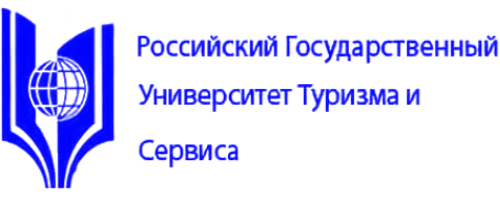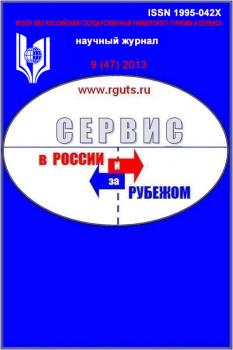The article is devoted to the considering theoretical and practical issues of the wellness industry development in Novosibirsk and the use of its opportunities for organizing leisure time for older people. The authors consider the development tendencies in the wellness industry as way for organizing the leisure of consumers whose physical, psycho-emotional and financial possibilities are lower than active age people. The statistical data cited in the article indicates that the development of services in this sector is rapidly growing, the range of services are expanded, wellness companies are oriented to different groups of consumers: children, pregnant women, disabled people, etc. However, attention is not paid to people of the third age. This research provides mapping the market of services of enterprises and organizations rendering wellness services. In particular, those organizations that provide fitness and dance services are considered. It is these services in the wellness industry that can solve for the elderly at least two tasks at a time - maintaining and strengthening psychosomatic health and creating conditions for versatile communication. The results of mapping show that Novosibirsk has large number of such organizations, however, only two among them (included in the federal fitness network) provide services for the elderly people. The survey of elderly people in Novosibirsk allowed to identify the need for fitness and dance services, and made it possible to determine priorities in time, cost and types of employment in the centers of the wellness industry. Also the authors note that classes for people of this target group should take into account its features and should be conducted by trainers with special education. According to these features specialized programs should be developed, including the use of recreational and service technologies as an alternative to the usual fitness.
wellness, wellness industry, wellness services, dance and fitness services market, service market mapping, recreational technologies, dance technologies, fitness technologies, health-improving leisure for older people
1. Vahorina I.G. Istoriko-logicheskiy analiz stanovleniya metodologii fitnes-aerobiki // Studencheskiy nauchnyy forum 2015. Mater. VII Mezhd. stud. konf. URL: http://www.scienceforum.ru/2015/1343/13581 (Data obrascheniya: 26.02.2017).
2. Zagorskaya L.M., Nazarkina V.A. Social'no-kul'turnaya reabilitaciya po zreniyu podrostkovogo i starshego shkol'nogo vozrasta: sovremennye tehnologii // Servis v Rossii i za rubezhom. 2016. T.10. №5(66). S. 105-122. DOI:https://doi.org/10.12737/21200.
3. Zhilkina N.V., Zhilkin V.V. Reinkul'turaciya kak faktor povysheniya kachestva zhizni lyudey «tret'ego vozrasta» // Social'no-ekonomicheskie yavleniya i processy. 2011. №11. S. 357-362.
4. Kel'bah E.I., Plotnikov P.A. Analiz rynka fitnes-uslug: tendencii i perspektivy razvitiya (na materialah g. Permi) // Kontentus: elektronnyy nauchnyy zhurnal. URL: http://kontentus.ru/wp-content/uploads/2014/07/Kel'bah-E.I.-Plotnikov-P.A..pdf (Data obrascheniya: 26.02.2017).
5. Kryazhev V.D. Novye fizkul'turno-ozdorovitel'nye tehnologii Shkoly zdorov'ya dlya lic pozhilogo vozrasta // Vestnik sportivnoy nauki. 2012. №2. S. 49-52.
6. Litvak R.A., Rezanovich I.V. Organizaciya dosugovoy deyatel'nosti pozhilyh lyudey v fitnes klube // Sovremennye problemy nauki i obrazovaniya. 2011. №6. URL: https://www.science-education.ru/ru/article/view?id=5233 (Data obrascheniya: 26.02.2017).
7. Pogrebova O.A. Segmentaciya rossiyskih potrebiteley otrasli tovarov i uslug zdorovogo obraza zhizni // Vestnik Yuzhno-Ural'skogo gosudarstvennogo universiteta. 2015. T. 9. №3. S. 119-128.
8. Ryamova K.A., Rozenfel'd A.S. Obrazovatel'noe prostranstvo fitnes-klubov v podderzhanii samorazvitiya i samorealizacii pozhilyh lyudey // Uchenye zapiski universiteta im. P.F. Lesgafta 2016. №6(136). S. 136-142. DOI:https://doi.org/10.5930/issn.1994-4683.2016.06.136.p136-143.
9. Ryamova K.A., Rozenfel'd A.S., Ovchinnikova L.V. Fitnes-tehnologiya v podderzhanii zhiznennoy pozicii pozhilyh lyudey // Innovacionnye processy v obrazovanii: strategiya, teoriya i praktika razvitiya: Mat. VI Vseros. Nauch.-prakt. konf. Ekaterinburg, 2013. T.2. S. 89-92.
10. Stepanova O.N., Savin S.V. Kriterii klassifikacii i tipologiya fitnes-programm // Vestnik sportivnoy nauki. 2015. №3. S. 49-54.
11. Pilzer P.Z. The New Wellness Revolution: How to Make a Fortune in the Next Trillion Dollar Industry. Hoboken, NJ: Wiley, 2007. 304 p.





